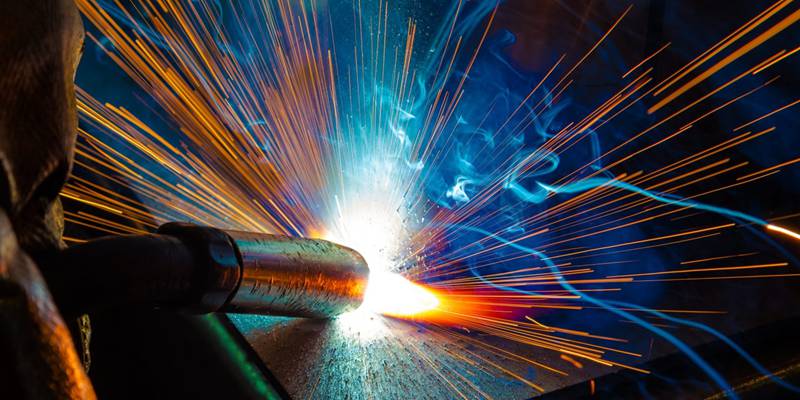The Ultimate Guide to Welding WPS Procedures: An Extensive Summary for Welders
In the intricate globe of welding, Welding Procedure Specs (WPS) act as the backbone of making sure top quality, consistency, and safety in welding procedures. Understanding the subtleties of creating, carrying out, and keeping track of WPS treatments is vital for welders seeking to boost their craft and satisfy sector criteria. As we explore the numerous elements of a WPS and check out the details of certification and qualification, we will certainly uncover the crucial function these procedures play in the realm of welding. Allow's start a trip to unravel the intricacies and importance of WPS procedures in welding methods.
Importance of WPS Procedures
Recognizing the significance of Welding Treatment Requirements (WPS) procedures is important for making certain the top quality and stability of bonded structures. WPS procedures function as a roadmap for welders, detailing the essential actions, parameters, and products needed to accomplish an audio weld. By adhering to WPS standards, welders can ensure consistency in their work, bring about structurally audio and trustworthy welds.
One of the key reasons why WPS treatments are essential is their duty in keeping weld top quality and integrity. Adhering to the defined welding parameters and strategies described in the WPS aids prevent problems such as porosity, breaking, or incomplete fusion, which can jeopardize the toughness and toughness of the weld.

Components of a WPS
A Welding Procedure Specification (WPS) normally makes up important parts that information the particular requirements for performing a weld, guaranteeing consistency and quality in the welding procedure. The crucial parts of a WPS consist of necessary variables such as base steels, filler steels, interpass and preheat temperatures, welding processes, protecting gases, welding settings, and post-weld warmth therapy needs.
Base metals refer to the materials being joined, while filler metals are used to fill up the space between the base metals throughout welding. Preheat and interpass temperature levels are essential for managing the warmth input and protecting against problems like splitting or distortion. The welding procedure describes the specific method to be used, whether it's gas metal arc welding (GMAW), secured steel arc welding (SMAW), or an additional approach. Shielding gases protect the weld pool from atmospheric contamination. Welding settings specify the orientations in which welding can be executed. Post-weld heat therapy might be essential to relieve stresses and improve the weld's properties. A thorough understanding of these components is essential for developing a reliable and thorough WPS.

Qualification and Qualification
Having developed the necessary parts of a Welding Treatment Specification (WPS), the emphasis now moves towards the critical elements of qualification and certification in welding techniques.

Certification, on the various other hand, is the formal acknowledgment of a welder's credentials by an appropriate certification visit the website body or organization. Welding qualifications are generally based upon the specific welding procedures, products, and settings a welder is certified to work with. Holding a legitimate welding qualification demonstrates that a welder satisfies market standards and is experienced to perform welding tasks to the called for specs.
Producing a WPS
To develop a Welding Procedure Requirements (WPS) that satisfies sector standards, cautious factor to consider of welding procedures, products, and operational criteria is necessary (welding WPS). The initial action in developing a WPS is to determine the welding process to be used, such as gas steel arc welding (GMAW) or secured steel arc welding (SMAW) As soon as the welding procedure is determined, the following critical facet is picking the proper products, thinking about factors like base metal look at this site type, thickness, and joint design. Operational specifications such as welding existing, voltage, traveling speed, and protecting gas structure should likewise be diligently defined in the WPS.

Executing and Monitoring WPS
Upon finalizing the detailed Welding Treatment Specification (WPS) that thoroughly information welding processes, products, operational parameters, and quality control steps, the emphasis changes to efficiently carrying out and keeping track of the well established treatments. Implementation entails making sure that all welders associated with the job are familiar with the WPS and follow it carefully during the welding process. This calls for providing adequate training and supervision to ensure adherence to the specified procedures. Keeping track of the WPS entails continual oversight to validate that welding tasks align with the recorded specifications. Inspections, testing, and quality assurance procedures are crucial elements of the surveillance process to determine any kind of discrepancies or issues quickly. Regular audits and testimonials of the welding procedures aid in maintaining consistency and quality throughout the project. Effective application and surveillance of the WPS are important for ensuring the integrity, strength, and security of the welded joints, inevitably adding to the general success of the welding job.
Verdict
In conclusion, understanding and adhering to Welding Procedure Specifications (WPS) is important for welders to make sure quality, uniformity, and safety and security in their job. By recognizing the components of a WPS, acquiring proper certifications and certifications, creating detailed procedures, and executing and monitoring them efficiently, welders can boost their abilities and proficiency in welding practices. Adhering to WPS treatments is crucial for creating high-quality welds and conference market standards.
In the detailed world of welding, Welding Treatment Requirements (WPS) serve as the backbone of making certain quality, uniformity, and safety and security in welding procedures. The welding procedure details the details method to be made use of, whether it's gas metal arc welding (GMAW), secured steel arc welding (SMAW), or another method.To establish a Welding Procedure Requirements (WPS) that fulfills industry standards, mindful consideration of welding processes, materials, and functional criteria is essential. The first action in producing a WPS is to identify the welding process to be used, such as gas metal arc welding (GMAW) or protected steel arc welding (SMAW)Upon wrapping up the extensive Welding Treatment Spec (WPS) that meticulously information welding procedures, products, operational specifications, and high quality guarantee actions, the emphasis moves to efficiently carrying out and keeping track of the well established procedures.